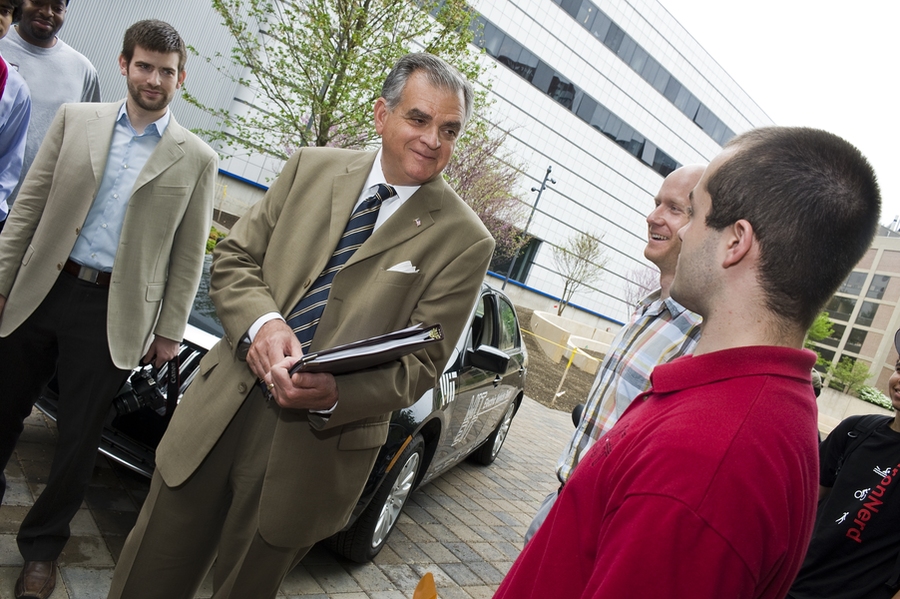Research has shown that talking on a phone while driving, even with a hands-free cellphone, causes as much of an impairment to driving ability as being drunk. And yet, as U.S. Secretary of Transportation Ray LaHood said in a talk at MIT on Monday, while the nation has successfully cracked down on drunk driving, when it comes to cell phone use in cars, nearly everybody does it.
This dangerous “epidemic” must stop, he said, and he hopes that smart people like the students at MIT will come up with ways — technological, social or political — to help curb the phenomenon, which kills thousands of people every year and causes many thousands more injuries.
To emphasize the point, LaHood invited a local couple, Jerry Cibley and Jeri Katz of Foxborough, Mass., to come to his talk to share their experience: Three years ago, Jerry was talking on the phone to his son Jordan, who was driving at the time; Jordan dropped the phone during the conversation, bent down to pick it up, and slammed into a tree. He was killed instantly.
In calling for students to help find solutions to the problem, LaHood said, “Your time at MIT is more than an opportunity, it’s a responsibility.” He urged students to devote themselves to helping to find solutions to real-world problems such as the “driving while distracted” issue that he stressed in his talk, or the problem of reducing greenhouse gas emissions that cause climate change.
“Something needs to be done,” he said. “I challenge all of you to find solutions.”
(From MIT World)
This dangerous “epidemic” must stop, he said, and he hopes that smart people like the students at MIT will come up with ways — technological, social or political — to help curb the phenomenon, which kills thousands of people every year and causes many thousands more injuries.
To emphasize the point, LaHood invited a local couple, Jerry Cibley and Jeri Katz of Foxborough, Mass., to come to his talk to share their experience: Three years ago, Jerry was talking on the phone to his son Jordan, who was driving at the time; Jordan dropped the phone during the conversation, bent down to pick it up, and slammed into a tree. He was killed instantly.
In calling for students to help find solutions to the problem, LaHood said, “Your time at MIT is more than an opportunity, it’s a responsibility.” He urged students to devote themselves to helping to find solutions to real-world problems such as the “driving while distracted” issue that he stressed in his talk, or the problem of reducing greenhouse gas emissions that cause climate change.
“Something needs to be done,” he said. “I challenge all of you to find solutions.”
(From MIT World)






